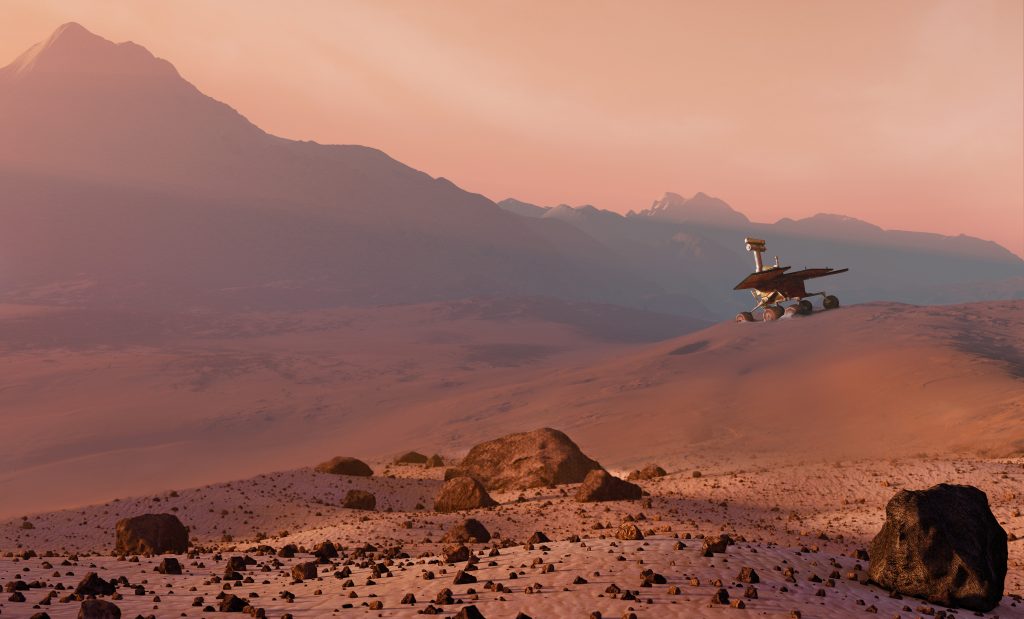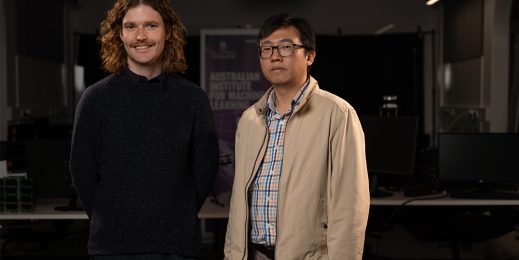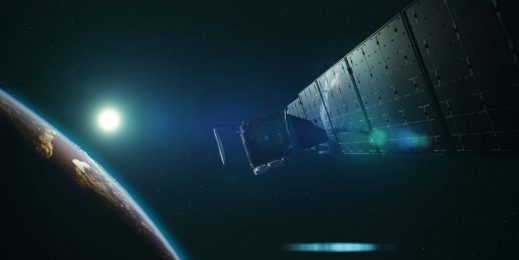
Fortifyedge stretches machine learning all the way to Mars
Major Tom to Ground Control – but how can you be sure?
For most of us, confirming our identity is a simple case of verifying our email and password, and perhaps a unique code sent to our smartphone. But Major Tom’s in space with his hands full; it’s not that easy.
The same goes for firefighters, defence personnel and anyone else in a high-pressure work environment.
Solving the ‘are you who you say you are?’ challenge has been a focus for Fortifyedge since it was established in 2019 and was accepted into the highly competitive United States Air Force Accelerator Powered by Techstars, and began exploring how to apply machine learning at the tactical edge, where edge-to-cloud solutions often operate in disrupted, disconnected, intermittent and low-bandwidth (‘DDIL’) environments.
In space, a round trip between Earth and Mars to send commands to a rover takes around 30 minutes. There might not be easy access to cloud computing or a chance to drop everything else you’re doing to confirm your identity.
Fortifyedge’s decentralised identity management platform, which was built on Microsoft Azure Stack Edge Mini R, is designed to use machine learning at the edge in order to identify the user of any device or vehicle, autonomous or not. If the platform finds something amiss, built-in software can automatically shut down access to systems even when disconnected from the cloud.
Fortifyedge has developed a range of systems for the tactical edge using the Azure Stack Edge Mini R system – essentially a seven-kilogram version of the cloud that can be transported in a backpack – which has attracted interest from the United States Air Force and the US Special Operations Command’s respective innovation programs, AFWERX and SOFWERX.
The company is now exploring how machine learning can meet space mission needs such as astronaut identification, status and safety in collaboration with the Microsoft Azure Space team, NASA and the International Space Station (ISS) Spaceborne Computer – which is purposely engineered for harsh edge environments – and will also enable additional capabilities to connect Azure workloads to the ultimate edge.
In June 2021, Fortifyedge formed a consortium with Microsoft and Thales Australia that announced a project called Nexium Defence Cloud Edge, a secure tactical cloud computing capability designed for the Australian Defence Force to operate at the edge of a battlespace.

Key to the project was finding a way to authenticate users, who could be soldiers or humanitarian aid providers, at the edge. By inserting a tiny machine learning capability in a smartwatch, Fortifyedge was able to tackle the problem, and the machine learning algorithm could be used with other body-worn technology such as Microsoft’s HoloLens2 to identify the wearer, check their status and what are were doing, and determine if they are safe to do it.
But bringing new capabilities to battlespaces isn’t the final frontier for Fortifyedge. It’s also been working with researchers at the University of Tasmania to fit Tasmanian devils with a machine learning device that can assess their health, and is now looking to the heavens for its next challenge. Literally.
Since becoming a member of Microsoft’s Azure for Space Startups Australia program, Fortifyedge has been introduced to NASA, which is looking at how it can leverage intelligent technologies to monitor astronauts’ safety and status.
It’s a case of keeping tabs on Major Tom.
Peter Padd, co-founder of Fortifyedge, says: “When you create machine learning that can train and be deployed at the edge, suddenly you have a capability that can support missions to Mars, where [bridging] the distance back to Earth isn’t possible. You need edge capabilities where you can train up the algorithm, so the operators trust them, where the actual data is being generated up in space.
That’s the future, right? AI, machine learning, space. There’s so much data that it’s like IoT on steroids up there and security is significant.
I’ve been on quite a few discovery calls with the US Space Force and they just straight out said, ‘That’s contested space now. It’s a contested environment. We need to take security seriously’.”
This is especially the case for astronauts and scientists working on assets that could be worth billions of dollars, connected to the ISS, according to Padd.
“You want to make sure that any sort of autonomous things that you’re using are still in the control of authorised users,” he says.
With facilitation from the Tasmania Government Space sector lead, Fortifyedge is seeking to develop a solution using its tiny machine learning capability on the ISS, in association with Microsoft and Thales Space.
The company is doing the leg work that will bring its space ambitions to life right now. It is working with the Tasmanian Royal Hobart Hospital, which has updated its unique hyper/hypobaric chamber facilties, generally used by ocean divers, so that it can simulate the environment on the surface of Mars.
This provides an opportunity to test Fortifyedge’s wearable machine learning under Mars-like conditions, says Padd.
Fortifyedge is also working on solutions that will be able to use machine learning at the edge to identify who is controlling remote autonomous vehicles such as a lunar rover.
“That rover on the moon, it’s a semi-autonomous vehicle that’s operating up there. How do you know who’s really in control of it? How does the vehicle actually protect itself?” Padd says.
“The way that rogue operators typically attack autonomous vehicles terrestrially is to firstly get access to it. Secondly, they cut the network off from who really is controlling it, and then do whatever nefarious things they want to do.
“Imagine you are the operator of that rover and we learn your pattern of life and how you interact with that rover, and we put that signature on the rover. So, when it receives a signal from you remotely, it can tell whether it’s you or if the bad guys are trying to take control of your rover.”
It’s important work designed to keep space safe.







